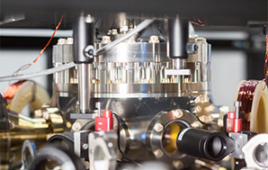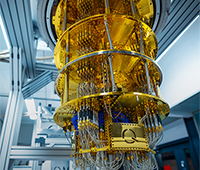Russian Masterpieces Put on Display Using NVIDIA GPU Technology
 |
| Using NVIDIA Mosaic, The Russian Museum can display gigantic views of classis art. Courtesy of NVIDIA |
The Russian Museum in St. Petersburg is Russia’s first state museum of national art. Since opening in 1898, it’s provided access to some of the country’s greatest masterpieces in painting, sculpture and iconography.
Now, with the help of NVIDIA GPU technology, visitors to this palatial complex can view these works in sumptuous detail, and immerse themselves in a rich viewing experience previously not possible.
The Russian Museum’s new multimedia center – which relies on NVIDIA Mosaic multi-display technology and NVIDIA Quadro professional GPUs to showcase super-wide-format images in incredibly high resolution – offers this one-of-a-kind art experience in its 22-seat auditorium.
“The auditorium is very compact and one single projector can’t display an image on the entire screen – the distance from the opposite wall is too short,” explained Vladimir Barzionov, technical director at CineSoft, a software developer for the center.
The output from two projectors needed to be imperceptibly blended into a single image for viewers, which includes art experts who will use the center to study craquelures – cracks on a lacquered or painted layer of a painting – on images scaled to 8 meters wide.
Simplifying the configuration and management, NVIDIA Mosaic technology makes the auditorium’s two projectors essentially work as one large display. Mosaic synchronizes the projectors, ensuring that the overlap area blends seamlessly with no visual artifacts. The end result is a 3,600 ? 1,080 pixel display surface capable of faithfully reproducing the artwork.
With this capability in place, the center enables visitors to get a behind-the-scenes look at museum activity, tour virtual paintings and normally inaccessible palace interiors, and even take simulated flights over St. Petersburg. Plus, the center can broadcast its events over the internet to the Russian Museum’s nearly 100 associate branches across the country as well as to museums around the world.
The system lets presenters choose, view and group images and video, create and save playlists, and control content broadcast to the screen and from or to the internet – all controlled by a touch interface. The lightproof, soundproof auditorium is also equipped with audio equipment, a special lighting system, a 50-inch plasma touchscreen for viewing and controlling multimedia content, and a webcasting system.
“This is the first solution in Russia and Commonwealth of Independent States countries that includes support for several projectors displaying onto complex geometrical surfaces, and controlling the content with gestures,” said Andrey Popov, executive producer at Polden, the firm leading the multimedia center’s overall design.
Using the latest display technology from NVIDIA to reach a broader audience appears to be a recipe for success. According to Vladimir Gusev, director of the Russian Museum, “Once people visit our virtual branches, they strive to get to the real Russian Museum.”



